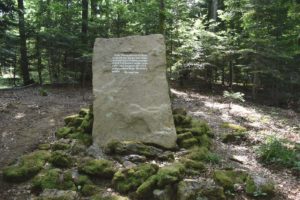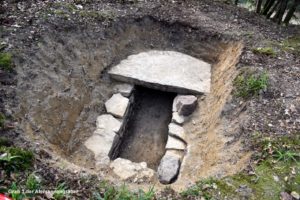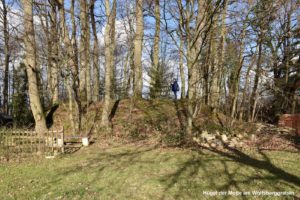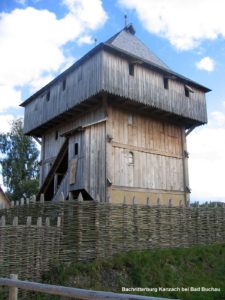3. Alemanni graves
Who were the Alemanni?
It was at the end of the 3rd century after Christ when the border of the Roman Empire was relocated at the Rhine, that, according to Roman documents (at first in 289), the people of the Alemanni settled on the right banks of the Rhine in the area of today’s land Baden-Wurttemberg. A Roman written source describes them as a cultural melting pot consisting of people from different regions and tribes: in German: alle (all) Männer (humans) = Alemannen. Until the 5th century the Alemanni were the neighbours of the Roman Empire and they were governed by several leaders, but they had no king. At the beginning of the 6th century the Alemanni were integrated in the Frankish Empire under the rule of the Merowinger kings and formed a duchy. At that time, the settlement area of the Alemanni stretched out from the north of Switzerland to Alsace.
The prehistoric stone graves of the Alemanni
In 1908 three prehistoric stone graves dated back to the times of the Alemanni were excavated at the end of the Ambringer Grund. The graves where bodies were buried without any offerings, belong to a small group of graves dating back to the second half of the seventh and early eighth century. They are made of large stone slabs without mortar. The graves were also covered with stone slabs in different dimensions. The used stone slabs consist of lime sandstone and were transported over 6 kilometres from the stone quarry being situated close to Pfaffenweiler, to the graves. The top cover plate having a dimension of 2.00 x 1.20 m, of the grave No. 2 was positioned as commemorative stone in 1908. Similar groups of prehistoric stone graves were often found in Breisgau. Excavation as well as research works have shown that such groups of graves are family tombs that the Alemanni had created near to their farm buildings. From the middle of the seventh century more and more dead bodies were buried without offerings. It is thought that this change in behaviour is obviously linked to the Christianization of the Alemanni. In 2020 the prehistoric stone graves have been uncovered. Due to aspects of historic preservation, two of these tombs were covered once again (kindly see the photos on the left side). The both relevant tombs can be realised as cavities on the site.
Lowland castle and settlement of Wolfsberg
It is supposed that the group of tombs is linked to the former settlement area of Wolfsberg (Wolfesberg), located in the west and close to the tombs. The settlement area was first mentioned in 1318 when Konrad Dietrich Snewlin, the bailiff and lord of Kirchhofen, as well as the knight Otto von Ambringen sold a millstream lying in the farming community of the villages Kirchhofen, Ehrenstetten, Gütighofen and Wolfsberg, together with the corresponding water rights to the monastery of St. Blasien. Along the trench of Wolfsberg remains of a medieval lowland castle made of wood and being positioned on a conic bank, can be seen. On its plateau the lowland castle has a diameter between 11 and 12 m and 14 to 15 m on the foundation. Its height is about 2 m. Findings of bricks and ceramic fragments are dated back to the 12th and 13th century. However, the castle is only mentioned as castle situated on the Aschbach (today this is the name of a meadow) in a rent register of the hospital church of Freiburg (Heilig-Geist-Spital Freiburg) in 1457. Possibly the castle was built as a fortress close to the mining area.



